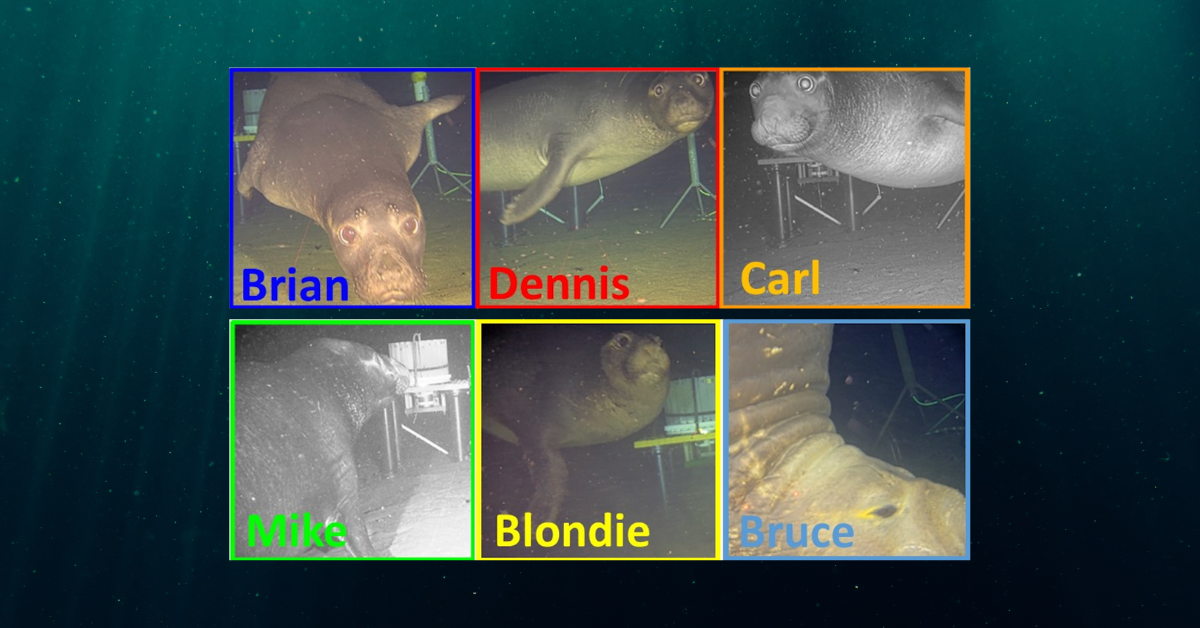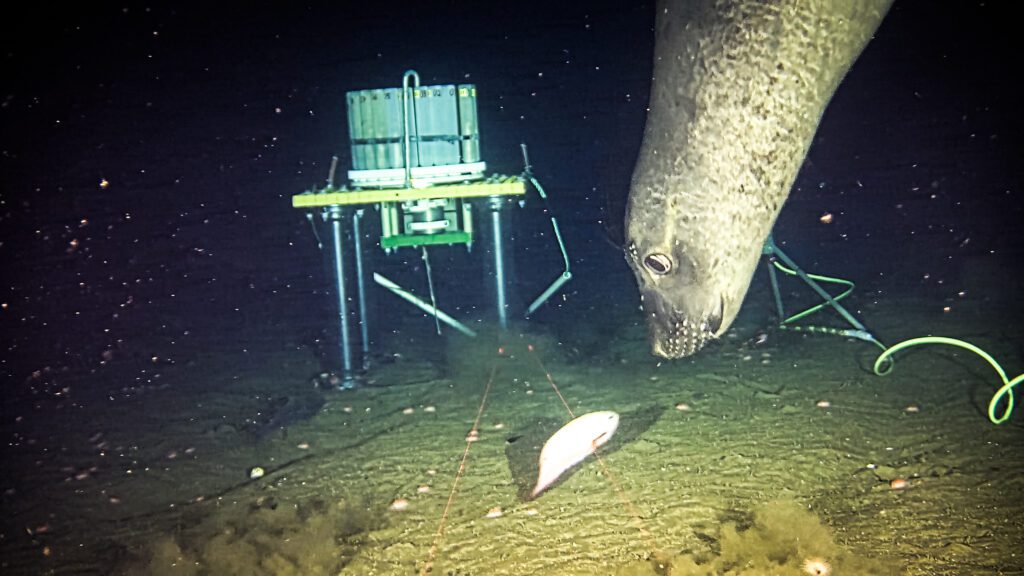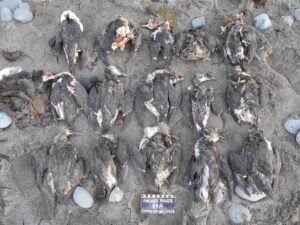
It’s hard not to laugh at photos of the eight young male elephant seals who hijacked a science project off BC’s coast and used it as their own personal “dinner bell.”
Call them party crashers, moochers, or photo bombers—this gang of teenage elephant seals is smart!
“We suspect the seals have learned to associate sonar noise from the research instrument with the presence of food—a phenomenon known as the “dinner bell” effect.”
Héloïse Frouin-Mouy, lead researcher
Planning to study the effects of light and bait on fish and invertebrates, scientists had placed a high-definition camera, an acoustic imaging sonar, a hydrophone, a pair of LED lights, and an automatic bait release at a depth of 645 metres in Barkley Canyon, off the West Coast of Vancouver. At least eight adolescent elephant seals, aged four to seven, quickly figured out that they could grab an easy meal there. Their appearances, which occurred multiple times between 2022 and 2023, was an unexpected bonus for the researchers.

“We suspect the seals have learned to associate sonar noise from the research instrument with the presence of food—a phenomenon known as the “dinner bell” effect,” said lead researcher Héloïse Frouin-Mouy.
“The seals appeared to use this sound to locate an area with prey and may take advantage of fish disturbed by the camera lights, particularly targeting sablefish,” said Frouin-Mouy in a study published in the science journal PLOS ONE.
“Northern elephant seals [were] almost extinct due to commercial hunting for [their] oil in the 1800s. Thanks to protection across North America, [the] population has bounced back to a place where the species is no longer at risk.”
Nature Conservancy Canada
Northern elephant seals (Mirounga angustirostris) are elusive. Most research on the animals has been conducted on land or with trackers. This study was the first glimpse into their lives in the deep sea, said a press release by the University of Victoria and Oceans Network Canada, partners in the project with Barcelona’s Instituto de Ciencias del Mar.
Elephant seals are named for their unusual large noses, which resemble an elephant’s trunk. Adult males can reach a weight of 2,000 kilograms, up to five times more than adult females, who are a mere 600 kilograms at most. Elephant seals, known for diving to extreme depths for up to 30 minutes at a time, migrate along the Pacific Coast from Alaska to Baja California.
“Northern elephant seals [were] almost extinct due to commercial hunting for [their] oil in the 1800s,” notes Nature Conservancy Canada. “Thanks to protection across North America, [the] population has bounced back to a place where the species is no longer at risk.”
At Barkley Canyon, researchers were able to observe the seals for nearly one year. They watched them power-napping on the seafloor (a behaviour which was never seen before from the male northern elephant seal), chasing fish, and bobbing their heads and sounding while chasing fish.
Read the press release here.




